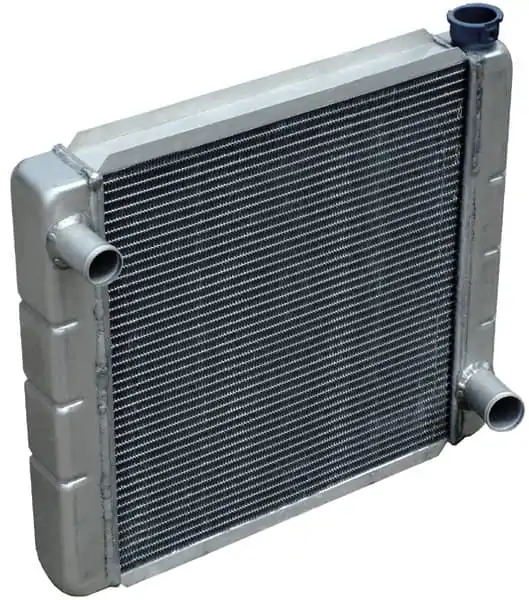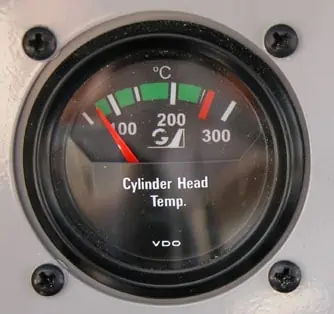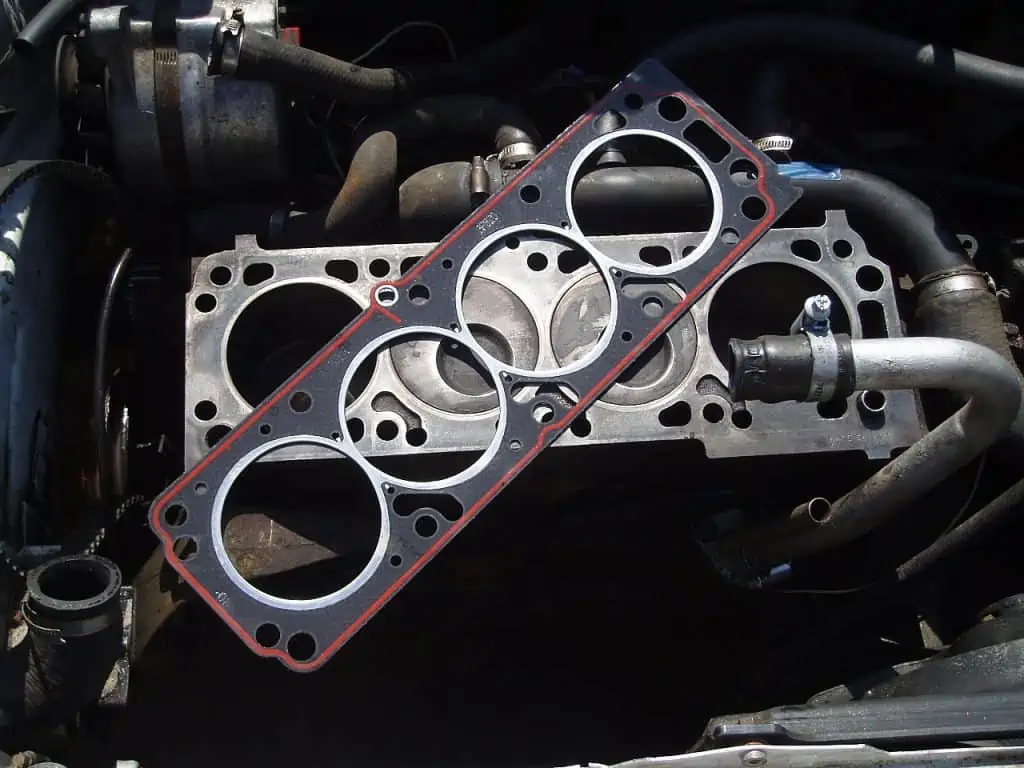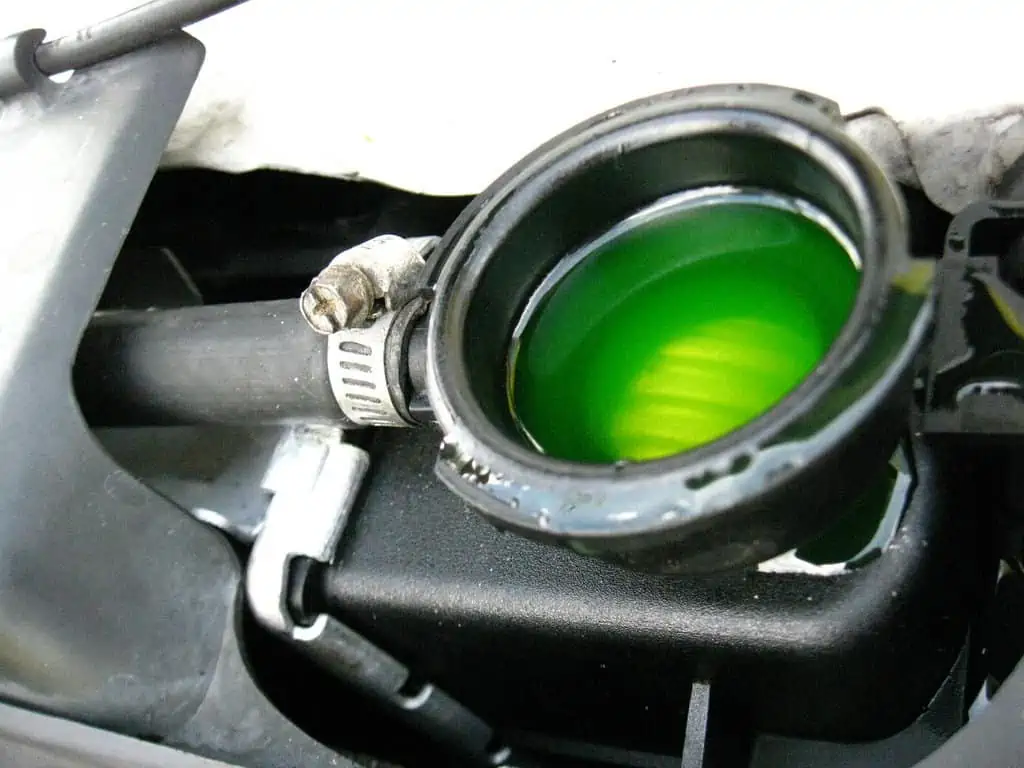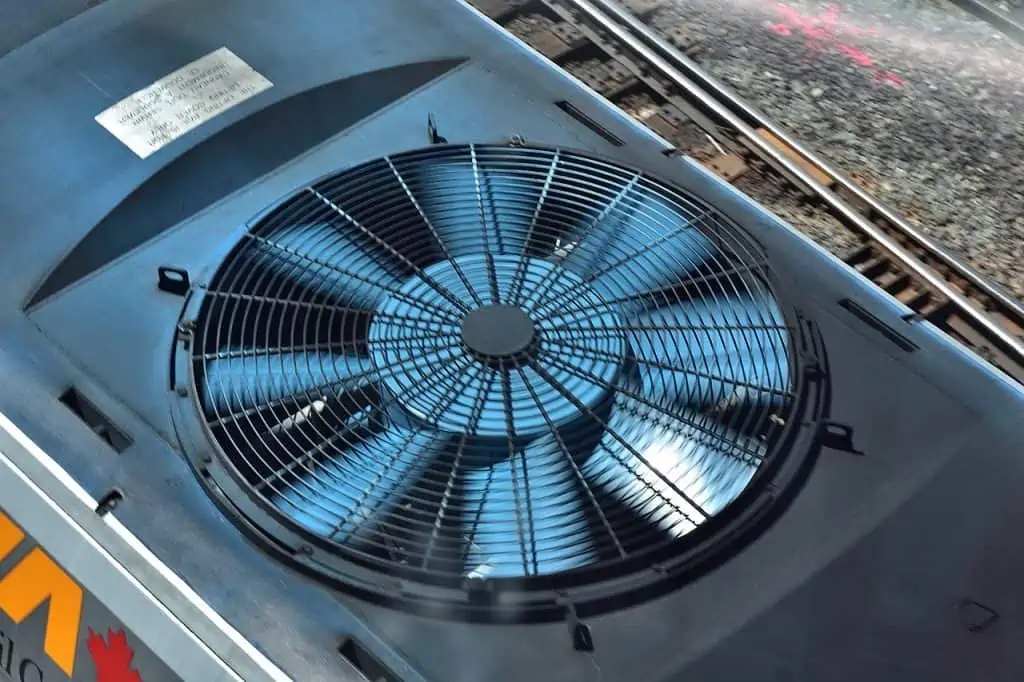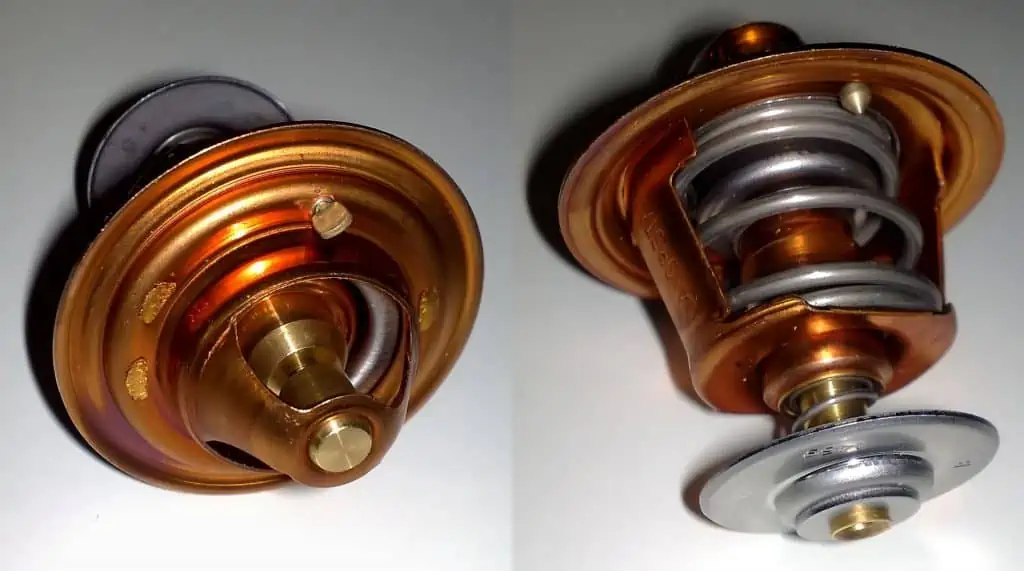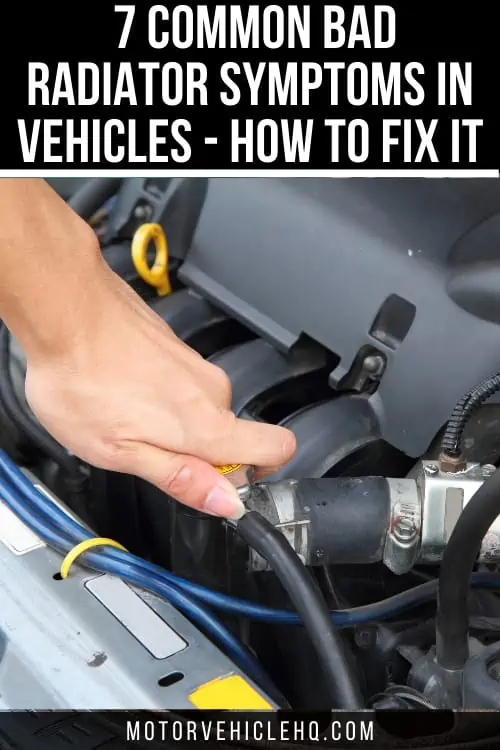One of the most important systems you must always maintain on your car is the cooling system. The radiator is one of the radiator’s essential parts. When the engine temperature rises above the threshold for maximum permitted temperature, this radiator is in charge of lowering it and maintaining the coolant temperature.
Before the radiator’s lifespan is up, it could develop a problem, and you need to find it quickly to avoid paying exorbitant repair charges.
Your engine’s coolant is being cooled by the radiator. Here’s how to detect if your radiator needs to be replaced and how much it will cost.
Your engine produces heat while it runs. Thus, the radiator contributes to its cooling. A coolant is used by a vehicle’s engine to absorb heat from the engine (engine fluid). The radiator pipe then transports this hot fluid to the radiator. It returns it to the engine after cooling.
Repeatedly doing this procedure enables the engine to run at its ideal temperature and prevents overheating. However, a malfunctioning radiator prevents proper cooling from occurring.
The radiator in your car is one of the most well-known parts. While you may be able to locate your radiator, it’s another matter to understand how it functions and how to spot problems.
Continue reading if you think your radiator might be broken. We’ll go over the five most typical indications that your radiator is broken, how it functions, where it is, and how much it will cost to replace it.
If your car’s radiator is the issue, you’ll know for sure after finishing this article, and you’ll be well on your way to receiving repairs. Let’s start by taking a brief look at the symptoms:
The overheating of the engine and obvious coolant leaks are the most typical signs of a damaged or blocked radiator. A temperature indicator that changes over time may also be seen on your dashboard.
Furthermore, just because you have an overheating engine or a radiator leak doesn’t necessarily mean the radiator is to blame. We’ll walk you through all you need to know while breaking down each sign of a damaged or clogged radiator.
A Radiator: What Is It In a Car?
We’ll go over exactly what a radiator is and what it accomplishes before instructing you on how to identify bad radiator symptoms.
The radiator is one element of your car’s cooling system that controls engine temperature. This heat exchanger, which is located in the front of the vehicle, consists of two connected water tanks connected by a huge number of tiny tubes.
One component of the cooling system that maintains the engine temperature of your car is the radiator. Two linked water tanks are joined by a large number of little tubes in this heat exchanger, which is situated in the front of the vehicle.
One of the tanks is used to pump hot coolant from the engine into the core.
Colder air is pushed through all of the little tubes as the car drives. By doing this, the coolant is heated. The fluid is then sent back into the engine after cooling in the radiator.
What Is the Purpose of a Radiator In a Car?
A crucial component of your cooling system is the radiator. Coolant heats up as it flows through the engine, and if there is no cooling system in place, it will continue to heat up until the engine overheats and shuts off.
A crucial component of the system that cools your coolant is your radiator. Through the little metal fins, you can see that the coolant moves from one side of the radiator to the other. It gets simpler to cool since the water thins out as it passes through the fins.
Your car accomplishes this with the assistance of an engine fan and by allowing air to flow over it naturally as you drive. For this reason, the radiator on your car was placed up front by the manufacturer.
Where Is the Radiator Located In a Car?
Undoubtedly one of the simplest parts of your car to locate is the radiator. It is always placed in the front of your car so that it may benefit from airflow when you drive to speed up cooling.
Typically, the radiator is behind the fan, which is behind the radiator, which is behind the bumper/grill region of your car.
Although the condenser and the radiator have striking visual similarities, they are easy to distinguish once you know what you’re looking at. There are two ways to distinguish your condenser from your radiator. The condenser is first located in front of the radiator. Second, your radiator is frequently much thinner than the heater core.
Simply search for the larger of the two parts when locating your car’s radiator, and you should be fine. However, since it’s frequently crammed close to other parts, accessing your radiator may prove challenging.
Which Ones are the Common Bad Radiator Symptoms In Vehicles?
Every driver has to be aware of the primary signs of a bad radiator since the radiator is crucial to the cooling system of your car and because it may malfunction before the end of its lifespan.
Early bad radiator symptom detection enables you to quickly and cost-effectively address the problem. Given the hefty cost, there is sometimes a very high probability that if you catch radiator issues early enough, you won’t need to replace the entire radiator or even only the problematic part.
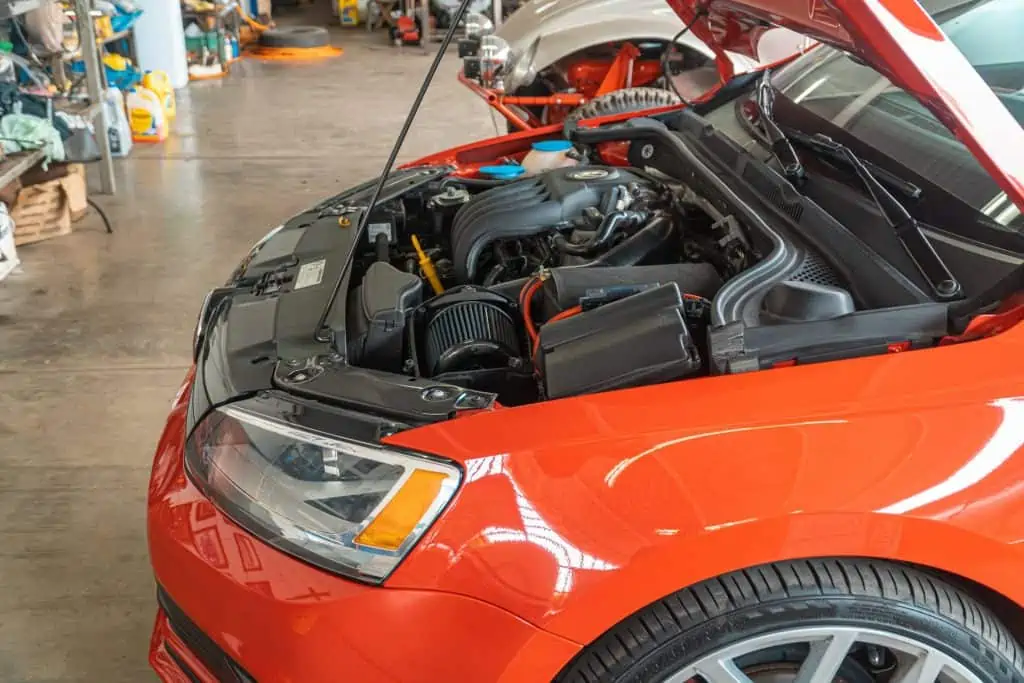
The good news is that to assist you in determining how to tell if your car has a bad radiator, automotive experts have put up a list of potential bad radiator symptoms you can look forward to.
1. Very High-Temperature Reading on the Temperature Gauge
Since the radiator is the primary element of your cooling system, the majority of the effects of a bad radiator will have an impact on that cooling system.
One of the indicators that badger radiators are failing, for instance, is when the temperature gauge reads extremely high. This shows that the engine’s temperature is rising significantly and that inadequate cooling is taking place.
Remember that when the temperature gauge indicates a high temperature, it could be a combination of other factors. As a result, before replacing the radiator because of its high cost, your mechanic must conduct a thorough inspection to determine whether the problem is caused by a bad radiator or not.
2. Visible Leaking Coolant
The coolant may be forced to leak from connections close to the radiator when the radiator malfunctions. For instance, a radiator can readily leak through weak connections if the material is worn out and the component itself is nearing the end of its lifespan. Puddles beneath the car will be the first sign of it.
So, the only thing you can’t do to find this problem is to inspect more closely underneath your car and search for any signs of coolant leaks. Look at any fluid puddles that may be present underneath the vehicle.
Remember that the fluids could be brake fluid, motor oil, or other types of auto fluids. So, before concluding that you have a bad radiator, you can check what kind of fluid it is.
Remember that fluid leaks, whether they include coolant or any other type of fluid, must be taken seriously because they may easily cause damage to your car and result in repair costs of thousands of dollars.
3. The Color of the Coolant Is Different
The fluid in your car ought to maintain its color. If you see some discoloration in the coolant, it may be a clue that your radiator is already failing since it may be allowing some debris to float through the water as it ages.
Therefore, you cannot inspect the coolant reservoir to determine whether there are any floating objects because the issue could be with the radiator or with other parts. To confirm that you need to replace a radiator, more tests and examinations are therefore also necessary for this problem.
4. The Radiator Fins Obstructed By Objects
As you may have already noticed, numerous of the symptoms listed may be caused by various factors. To determine whether your vehicle has a damaged radiator, you may need to look for a few specific signs. For instance, if you quickly inspected the radiator, you might discover some items that were obstructing the fins and causing some harm to them.
Whether that’s the case, you can check to see if removing these objects will solve the problem; but, if that doesn’t work, this long-term obstruction may have harmed the radiator and necessitated the installation of new parts.
5. Bent Radiator Fins
You may even check the actual fence since as they age, they may become bent or damaged, which affects how the radiator functions. This is similar to the last symptom. As a result, there can be a clear indicator that you should install it and will emit it.
A temperature gauge reading that is abnormally high is one sign that a badger radiator is failing. This demonstrates that there is insufficient cooling and that the engine’s temperature is rising rapidly.
6. A Defective Passenger Heater
The cooling and heating systems are somehow connected to the radiator. The failure of the heating system on your passenger side is hence another probable sign that might indicate a better leader. If that’s the case, you might want to add examining the radiator to your list of possible heating system problems.
7. The Cold Radiator Hose
Finally, you may determine whether a radiator is operating or not by going to the radiator’s location and feeling the radiator hose. Again, those shouldn’t be too chilly, and if they aren’t, that already means that something is wrong internally and that it’s not doing its job.
Keep in mind that a heated car should not be inspected for radiator issues. It is advised that you wait at least 30 minutes after it has cooled down before completing any inspections that need you to touch the system. Burns and other harmful conditions are hazards that you should never put yourself in.
Why Do Radiators Malfunction?
The end tanks are frequently composed of plastic even though the radiator core is made of metal. Over time, plastic deteriorates.
Old plastic radiators have a history of bursting and leaking coolant all over the place. Thankfully, you can frequently stop this from happening. It could be a good idea to replace your radiator before it starts to look brown around the edges.
The radiator may be prone to corrosion both inside and outside because a large portion of it is comprised of metal. Check your radiator for rust if you reside near the ocean or in a region where the roads are salted. By replacing the coolant regularly, corrosion inside the radiator is reduced.
What Is the Cost of Replacing a Bad Radiator?
Radiator replacement costs are one of those things that might vary greatly. The cost to replace a radiator can range from $200 to $900 overall, with the majority of vehicles costing between $400 and $500.
Depending on the type and model of the vehicle as well as whether it is an OEM or aftermarket part, the cost of a standard radiator with an aluminum core and plastic tanks can range from $100 to $600.
On the lower end will be something like a Ford Focus radiator, and on the upper end will be a Chevy truck with a big Duramax engine (with an integrated oil cooler).
A radiator replacement might take a variety of times. For certain vehicles with simple access, it may only take an hour, but tighter, more difficult configurations (such as those on an Audi or Porsche) may require closer to three hours. The range for labor costs is from $100 to $300.
Additionally, other components might also be required as part of the job. It is typically necessary to replace the coolant, and occasionally hoses, hose clamps, radiator caps, and the thermostat are all changed at the same time. Include an additional $15 to $100 for extra parts.
Is It Safe to Keep Driving a Car with Bad Radiator Symptoms?
You won’t necessarily be prohibited from operating a vehicle if you are on the verge of going bad earlier. In other words, minor radiator issues won’t prevent you from using your car.
Driving your car with a bad radiator is never a good idea, though, as it can cause other issues that could end up costing you thousands of dollars to fix.
Since the radiator, for instance, is in charge of cooling down the engine, when it malfunctions, the engine might become extremely hot, resulting in engine overheating, which can harm the entire engine. Think about the price difference between replacing a radiator and fixing an engine!
Head gasket by Collard / CC BY-SA 3.0. A few possible causes of an overheated engine include a broken thermostat, low coolant levels brought on by leaks, clogged radiators, and burst head gaskets.
Therefore, it is never a good idea to continue driving your car with a friend or dealer, and you should instead give the radiator your top priority to fix to avoid dealing with further issues.
Is Fixing a Bad Radiator Worthwhile?
Regardless of whether it is worthwhile, fixing the bad radiator symptoms is a necessity that must be attended to. You can choose whether you wish to put the money into the investment or sell your car in its place.
Before performing any auto repairs, you must assess the general condition of your car and determine the total cost of the repairs. For instance, it might be a smart idea to sell your car rather than waste your time, effort, and money if you notice that your expenses are increasing and are soon to be just 75% more than the worth of the vehicle.
What Is the Radiator’s Lifespan?
If you carry out the necessary routine maintenance as outlined in your vehicle’s owner’s manual, the radiator in your car should last between 8 and 10 years. The radiator is a very durable component.
But neglecting to maintain the radiator results in early issues that develop or cause damage before it even reaches the 8-year mark, if not earlier.
How Can I Diagnose Bad Radiator Symptoms?
A radiator test may be necessary if your temperature gauge indicates a spike in temperature. However, because the radiator is made up of several parts, you might want to examine them. Knowing the source of the radiator issue is made easier by this.
A malfunctioning thermostat, low coolant levels brought on by leaks, clogged radiators, or burst head gaskets are a few examples of potential causes of an overheated engine. Therefore, it may be important to inspect your car’s radiator components before examining the inside of the radiator.
Checking for Possible Exterior Coolant Leaks
A bad radiator hose may cause leaks. The engine overheats as a result of this decreasing the coolant level. Observe the engine inlets and seek for leaks that resemble the fluid coming from your engine to check for external coolant leaks.
Examination of the Cooling System
You can’t immediately go to the radiator because there are so many interconnected parts unless you already know that’s the issue. We enjoy doing a series of examinations at the dealerships to identify defective items.
1. Looking for a Broken Thermostat
An infrared temperature gun is required. then adhere to these easy steps:
- Warm up the engine of your car. Allow enough time.
- To find the radiator hoses, look. Your car has an upper and a lower radiator hose.
- Use the infrared gun to check the radiator hose’s temperature. Await the engine to overheat before measuring the two hoses.
- A defective thermostat will result in either both hoses remaining cold or only one becoming hot. Don’t try to measure this by touching the hoses in a manly manner. You risk burning your hand if they get too hot.
Antifreeze in the radiator by EvelynGiggles / CC BY 2.0. Your car’s fluid should continue to be its original hue. If you notice some coolant discoloration, it might be a sign that your radiator is already failing because, as it ages, it might be allowing some debris to float through the water.
2. Examining for a Clogged Radiator
The coolant flow is hindered if your radiator has an interior obstruction. If you have an external obstruction, it could hinder airflow and result in overheating. What you should do to check is as follows:
- You need a cool engine. Until it no longer feels warm at all, leave it parked and off.
- View the radiator’s interior. Remove the cap and look inside for any debris. You’ll have to get a new radiator if you have an interior clog.
- Check for exterior obstructions. Check your radiator’s front for anything that might have clogged it. An exterior blockage should be easy to remove with a garden hose or compressed air.
3. Troubleshooting for Cooling System Leaks
Your engine will overheat if the cooling system leaks. If you wish to stop future damage, you must fix this right now. A cooling system pressure tester and coolant dye kit are required for this examination.
- Let your car’s engine be thoroughly cooled.
- Remove the pressure cap and store it in a secure location.
- Apply pressure to the tester as directed by the manufacturer. Don’t go over the limit specified on your radiator cap.
- Check the system for leaks.
- Remove your tester after adding some coolant dye if necessary.
- Reinstall the radiator cap before starting the car.
- Keep an eye out for the coloring and look for leaks. Sometimes it takes several days of constant driving before you see the dye; this is an indication of a slow leak.
4. Examining the Cooling System Pressure Cap for Defects
Can it overheat due to a bad radiator cap? Yes. The coolant begins to boil if your cap isn’t keeping pressure, which causes the engine to overheat. For this check as well, keep your system pressure tester close at hand.
- Let the engine cool completely
- Remove the pressure cap by unscrewing it.
- Apply the cap to your pressure tester. Make sure it contains the recommended quantity according to the cap. If not, swap it out.
5. Inspecting the Water Pump for Malfunction
The appropriate amount of coolant is not circulated when a water pump malfunctions. The engine may also overheat as a result of this. You shouldn’t check this until you’ve thoroughly inspected the thermostat.
- Let the engine completely cool
- Pull the pressure cap off.
- Watch the coolant to see whether it starts to circulate after starting the engine.
- You could require a water pump if it is immobile.
- Examine the water pump. It can be showing leakage symptoms. Inspect the area for moist spots or any dry green or white residue.
Radiator cooling fan by Saud / CC BY-SA 4.0. If the engine temperature rises higher than normal, check the cooling fan. If it won’t switch on or runs slowly, a bad radiator might be the problem. On a mechanical fan, the clutch needs to be replaced. While operating an electric fan, you should first do a circuit diagnosis.
6. Troubleshooting a Defective Radiator Cooling Fan
Your engine overheats when the cooling fan malfunctions.
- Put the car in the parking.
- Find the cooling fan. Regardless of whether it is mechanical or electric, the engine powers it.
- Warm up the engine by starting the vehicle.
- Check the cooling fan if the engine temperature increases over usual. This can be the cause of your issue if it won’t turn on or runs slowly. You have to swap out the clutch on a mechanical fan. You should first do a circuit diagnosis while using an electric fan.
7. Troubleshooting a Faulty Head Gasket
Nobody likes to experience an engine internal problem, yet it does occur frequently. Repairing cooling system flaws right away is the best approach to stop this. This means avoiding adding water to your radiator and disregarding leaks.
You’ll need a block test kit to complete this inspection.
- Let the engine cool completely.
- Lift the radiator cap off.
- Connect the block tester. Be sure to adhere to manufacturer specifications.
- Keep an eye out for cooling system signs of combustion gases. You must disassemble the engine for additional troubleshooting if there are signs of gases.
As you can see, diagnosing a bad radiator requires more than simply glancing at the component. That’s because the cooling system has many moving parts, and when one of them isn’t functioning properly, it causes the other parts to exhibit the same symptoms. The fact that the engine overheats does not prove that the thermostat or radiator is to blame.
Which Other Parts Can You Also Examine for Possible Bad Radiator Symptoms?
Other components may also break when the radiator fails. The heater core, water pump, and thermostat are the three primary parts that need to be inspected.
1. The Heater Core
The heater core resembles the radiator’s offspring, as anyone who has seen one before may attest. It’s simply a smaller version. It even functions the same internally. A heater core’s primary function is to generate warm air for your cabin. You lose heat when debris jams the tiny heater core tubes of the bad radiator.
Additionally, the heater core cracks due to high temperatures and pressure when the engine starts to overheat. The car windows begin to fog, and a leak may have left your flooring damp.
2. The Water Pump
You need an operational water pump to transport coolant into the passageways and hoses of the cooling system. It’s often built of plastic parts. If debris begins to break away in the radiator, the water pump experiences damage or abrasions.
The water pump could stop working once the flow is interrupted.
Car engine thermostat by Hoikka1 / CC BY-SA 3.0. Typically, coolant replacement is required, and on occasion, hoses, hose clamps, radiator caps, and thermostats are all replaced at once.
3. The Thermostat
The thermostat must function properly to regulate the engine temperature. This component is located at the top radiator hose’s end. It controls the cooling system’s coolant flow. It opens when temperatures reach the correct level, allowing cooling system fluid to circulate freely.
When your radiator stops working properly, your thermostat is under more strain. A malfunction results from this.
The valve frequently becomes stuck open or closed. The engine overheats if it won’t open. You can check to see whether the thermostat is stuck by touching the radiator hoses. The upper hose should be warm to the touch, and the bottom one should be chilly.
Your engine won’t ever reach the appropriate temperature if the thermostat becomes jammed open. You use more fuel as a result of this.
You should therefore fix a broken radiator as soon as possible. If you don’t, you can harm both your engine and these additional cooling system parts. Why accrue more repair costs than necessary?
Don’t put water in your radiator either, despite what your grandpa told you to do. Do us all a favor.
The Conclusion
Your car’s cooling system is crucial overall, and the radiator is one of the highly popular parts that may affect how well it works.
Despite being extremely resilient and having a lifespan of up to 8 to 10 years, the radiator could malfunction at any time. To avoid more issues that may quickly cost you a lot of money, it’s crucial to know how to detect if your car has a battery. However, there are specific circumstances where it goes bad prematurely.
The radiator needs to be fixed, but if your car has other significant issues, your investment might not be worthwhile. Therefore, based on the overall or fear cost, you should decide if it is worthwhile to fix the radiator or not.
Ignoring the bad radiator symptoms could result in more time and cost. An engine will overheat if the radiator is broken. This could be caused by coolant leaks, cracked radiator fins, faulty head gaskets, broken fins, etc. Failure to pay close attention to these warning indicators could result in engine failure or long-term damage.
Consequently, you wasted money that you could have used on other, more crucial things. Therefore, it is ideal that you look for and remedy any bad radiator indications. If necessary, replace the bad radiator to prevent engine damage. An excellent alternative is to call a qualified mechanic if you are unable to handle it.

Nyangano Maurice specializes in vehicle troubleshooting and has more than 10 years of experience in the automobile industry. Over many years of experience as a car mechanic, he has acquired a broad range of skills, including engine repair, brake systems, electrical systems, and more. He frequently hosts community workshops and training programs to help motor vehicle owners understand their vehicles better.
